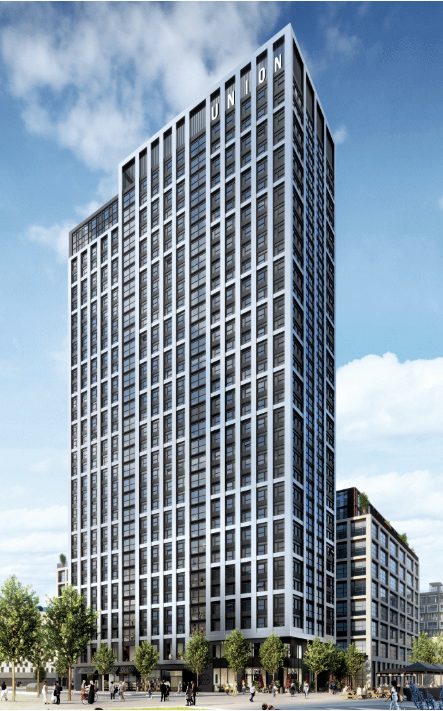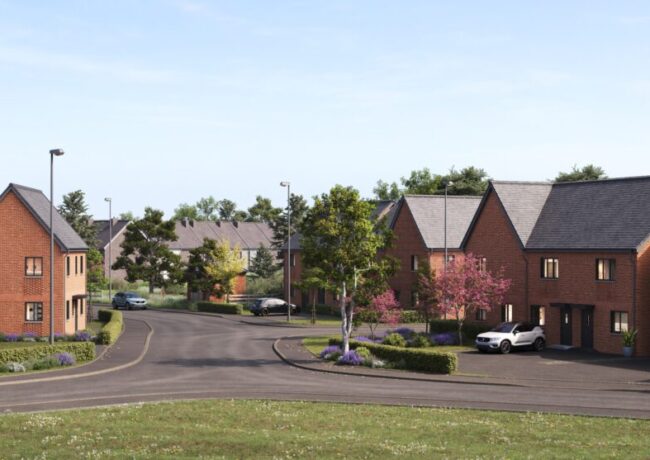Manchester reveals concerns over co-living
Development of co-living schemes in Manchester should be limited until the concept is properly tested, as some schemes may not meet minimum space standards or generate public revenues, the city council has said.
“Given that the product is untested in Manchester, it is not considered appropriate to approve a significant level of co-living accommodation,” said a report to Manchester’s executive committee by strategic growth and development director, Eddie Smith.
“It is suggested that co-living should only be supported in a very limited number of places, in restricted amounts, within the city centre and under specific circumstances.”
The council should consult with stakeholders, with a view to developing a policy on co-living in its local plan, to be adopted in 2023, Smith’s report urged.
Co-living provides clusters of shared housing with communal space and amenities in large-scale complexes. It has been billed as a solution to the housing crisis – in particular, the lack of affordable housing for young people.
In Manchester, Downing is one developer hatching co-living schemes. It was set to submit plans for a 2,204-bed co-living development at First Street last month, with a 44-storey tower at the centrepiece of the SimpsonHaugh-designed proposals, and accommodation ranging from studios to five-bedroom apartment ‘flat-shares’.
Downing bought Plot 11 at First Street from Patrizia in March for around £18m.
Meanwhile, entrepreneur Colin Shenton followed up his Ziferblat co-working space with the launch of Oppidan, a co-living scheme in Manchester’s Swan Street.Tenants pay a single fixed monthly rent, including their private apartment, utilities, Wi-Fi, food essentials, cleaning and maintenance, four hours of free car hire per month and community events. Shenton is eyeing Liverpool for his next co-living scheme, he said this month.
Critics of the concept argue that co-living is a clever way for developers to get around residential planning rules by building higher density schemes with smaller floorplates, packing more people in and bumping up revenues.

Vita is also branching out into co-living under its Union brand, proposing a 32-storey building at Water Street
In his report, Smith noted that co-living is an undefined type of development in the National Planning Policy Framework, unlike the build-to-rent sector or recognised shared accommodation such as HMOs.
This means co-living schemes in Manchester would be submitted to planning as sui generis development, which does not fall within a particular use class and therefore does not have to conform to nationally prescribed space standards for housing. Currently, this is 37 sq m for a studio or one-bed unit, and 50 sq m for a two-person unit.
“The evidence suggests that some [co-living] units – mainly studios – are up to 50% smaller than these standards,” the report said. “Given the size and nature of the product, the smaller co-living studio spaces would not be considered acceptable as permanent homes for residents.”
If co-living schemes need to be converted to other uses in future, given that the concept is untested and may not be viable, space standards and layout are “a crucial consideration”, Smith wrote.
In addition, Manchester’s planning framework does not require sui generis developments to contribute to affordable housing through Section 106 or other agreements. The report recommended that the planning department consider co-living schemes in the same way as other ‘C3’-category residential proposals, so they help finance the council’s social aims.
Co-living schemes may not contribute to council tax revenues, either, as the rents are generally inclusive of bills and there is no tenant liability, the report added.
Overall, the Manchester housing market differs demographically from many cities in the UK and US, such as London and New York where the concept originated, and therefore may be less appropriate.
“There is evidence that, in the current market, it is becoming more difficult for developers to fund and deliver traditional housing models, and there is a concern that co-living is becoming the default position for many developers and investors,” Smith wrote.
Manchester city centre’s population has risen since 2012 to 60,000 people, including a significant rise in the proportion of residents aged between 25 and 35.
The draft Greater Manchester Strategic Framework aims to deliver 201,000 new homes by 2037. A total of 5,000 new homes have been built in the city centre in the past five years, with a further 9,000 due for completion over the next 2-3 years. the report noted.




